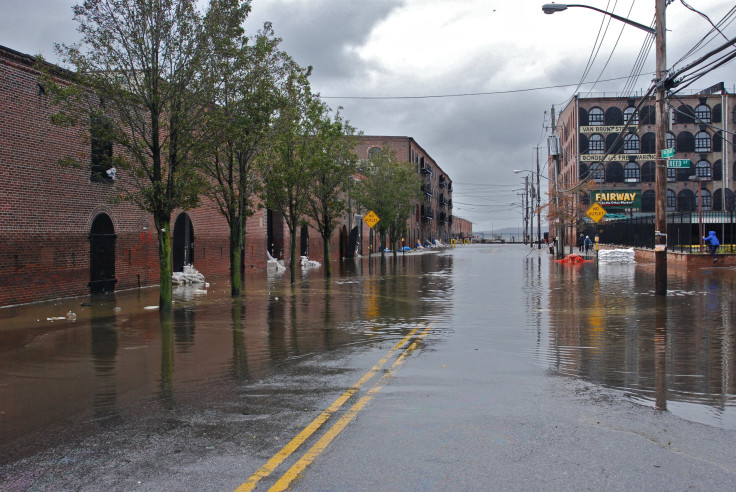Sandy Environmental Toll: Polluted Rivers, Lost Seabirds

Hurricane Sandy's victims are numerous: nearly 100 dead in the United States at last count, plus scores more in the Caribbean. In hard-hit New York City, elderly residents of public housing are struggling to get access to food, water, and medications.
Rivers and water systems along the East Coast have also been hit hard by Sandy, with historically high storm surges and widespread flooding bringing a wave of pollution in their wake.
Environmental advocacy group Riverkeeper called the pollution wrought by Sandy upon the Hudson River 'unprecedented' on Tuesday. A cornucopia of toxic chemicals has been washed into New York Harbor and the area's rivers by the storm surge: petroleum products from waterlogged cars and boats; contaminants from industrial, commercial and residential buildings, as well as subways, roads, parking lots and tunnels.
As of Thursday, more than 630 storm-related oil spills reported in New York state alone, according to the New York Daily News.
“The toxic legacy from this storm will continue. This is like an Exxon Valdez spill from nonpoint sources,” Riverkeeper spokesman John Lipscomb said in a statement Tuesday. “Instead of it being one product like crude oil, it’s a thousand different products and floatables, and instead of being from one source like a tanker, it’s from a thousand different locations.”
Many officials are worrying about Sandy's storm surge sending pollutants from Superfund sites in New York City, like Newtown Creek, which lies on the border between Brooklyn and Queens, and the famously fragrant Gowanus Canal in Brooklyn.
While federal and state environmental officials are still working to assess the scope of pollution from industrial sources, there's a more common contaminant to worry about: raw sewage.
The Hudson is no stranger to sewage overflows – even a moderate rainstorm can send all kinds of unmentionables into the river. But this storm is different. Thanks to the Sandy-related storm surge, sewage has been washed into roads and homes instead of being washed back into the river or harbor. Another possible reason why contamination levels in the Hudson River Estuary were lower than typical post-storm levels is that Sandy's storm surge brought a tide of ocean water into the estuary, according to Riverkeeper.
Sandy's environmental effects in the mid-Atlantic were much less severe. The Chesapeake Bay was pummeled as well, though not as badly as when Tropical Storms Irene and Lee passed through in 2011. But the true measure of Sandy's impact on the Chesapeake likely won't come til spring, when aerial surveys will allow scientists to gauge the storm's effect on underwater grasses.
"What we saw with Sandy is nothing considering the effects we had with Irene and Lee" where the upper part of the Chesapeake was "one big, brown turbid mess for two months," Virginia Institute of Marine Science researcher Bob Orth told the Associated Press.
Some local environmental regulations have been temporarily suspended in the interest of human health. New York City has waived its usual permit requirements for pumping water for both businesses and homeowners struggling to mop up after the hurricane.
However, if standing water in a building contains obvious contaminants like oil floating on top, “all reasonable measures should be taken to collect and properly dispose of the material prior to pumping out the structure,” New York's Department of Environmental Conservation says.
The storm is also bringing some unexpected visitors along with it: seabirds, many of which were sucked into Sandy by gale-force winds and, if they were lucky, were able to travel along with the storm in its relatively calm eye.
"The majority of seabirds, if they are not too weakened from having flown for so long without food, will probably find their way back to shore quickly," bird expert Kenn Kaufman told Audubon magazine.
Some birds may be injured or exhausted on their way back to the ocean, often becoming stranded in parking lots. If you do see an injured bird and can safely capture it, a local wildlife rehabilitation center is the best place to take it to.
© Copyright IBTimes 2024. All rights reserved.





















